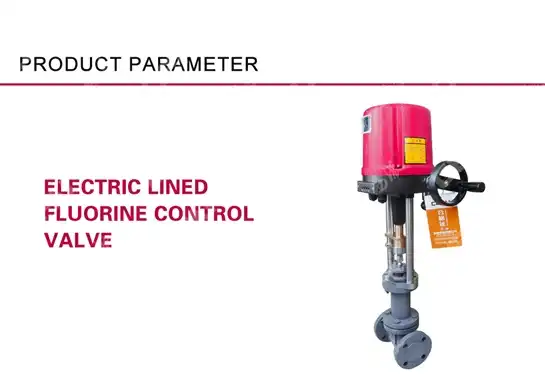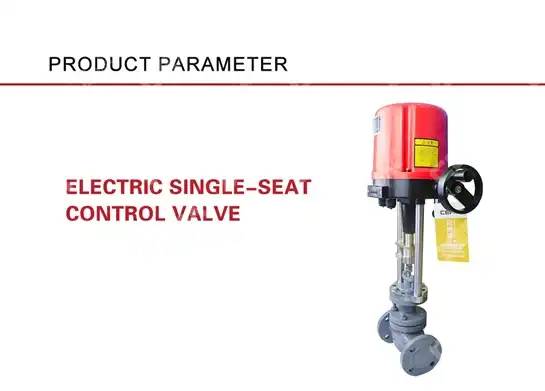A thorough understanding of the automobile industry's usage of Automotive Pneumatic Control Valve demonstrates its critical role in effectively managing air flow and mechanical operations. These valves are crucial parts of automobile automation systems because they help regulate air pressure precisely and improve operational dependability. The definition, main uses, technical characteristics, and reasons they are essential to contemporary vehicle performance and manufacture are all covered in this article.
What Is an Automotive Pneumatic Control Valve?
A specialized mechanical valve called an Automotive Pneumatic Control Valve is used in automobile systems to guide, control, or regulate the flow of compressed air. It mainly uses a pneumatic actuator, which responds to control signals by moving the valve mechanism. For automation components like air injection modules, suspension systems, and brakes to operate smoothly and dependably, this type of valve's primary function is to modify air pressure and flow inside control circuits. These include sophisticated signal processing and valve positioners for improved calibration, which give precise control over the air supply system that is essential to the production and operation of automobiles, in contrast to merely mechanical valves. Pneumatic control valves are the central nervous system components of automobiles, regulating airflow. They automate activities that would normally need manual intervention by interacting with pressure sensors and solenoid valves. The expansion of process control and industrial automation in the automobile industry is congruent with this integration.
The Problem It Solves and the Need It Fulfills
Countless subsystems in the automobile sector require air pressure regulation that is both extremely dependable and extremely accurate. To solve problems with fluid dynamics, Automotive Pneumatic Control Valves keep compressed air systems running smoothly, without pressure spikes or dips that might damage components or cause accidents. The accuracy and adaptability needed by modern automated systems are beyond what old mechanical valves could provide. When makers use pneumatic control valves, they get around problems like uneven actuation methods, wasteful energy use, and trouble controlling flow exactly. These valves keep the system from breaking down and make sure that parts like automatic transmissions and pneumatic brakes work at their best. These parts depend on steady air flow and quick responses to control signals. Their combination cuts down on upkeep and downtime, meeting the need for longer-lasting, higher-precision parts in the business. Also, the fact that process control and remote tracking are being used more and more in the car industry makes these valves even more important for making sure that signals are accurate and air supply systems are strong. Without them, automatic systems would not be able to repeat actions or handle errors as well.

Core Features & Functionality Deep Dive
Automotive air control valves have a few main features that make them an important part of vehicle technology. To begin, the Automotive Pneumatic Control Valve actuator is the main driver. It turns the energy in compressed air into mechanical motion that moves the valves. This exact actuation mechanism makes sure that valves react actively to control circuits, instantly changing the flow of air to meet practical needs. Flow control is another important feature that stands out. Integrated valve positioners control how much air flows through valves by changing the size of the holes that are measured. With the help of pressure monitors, these positioners keep the valves in the exact same place, so the output stays the same even when the source pressure changes. This feature is very important for systems where bad airflow could change how fast the brakes work or how the suspension responds. The solenoid valve's integration creates an electrical link that lets automated systems send signal orders that cause the valve to quickly open or close. When pneumatic and electrical control circuits work together, reaction times are sped up and system stability is improved overall. The materials used in these valves were chosen to last under high pressures and frequent cycling. This makes them immune to wear and the environmental factors that are common in car settings. Modern methods for valve testing allow for fine-tuning to meet a wide range of application needs. Systematically, these valves facilitate energy efficiency by minimizing air leakage and optimizing compressed air consumption. Their smart design supports both traditional automotive hydraulic systems and emerging hybrid models, bridging gas and mechanical fluid dynamics smoothly.
Under the Hood: Technology Explained
Automobile pneumatic control valves are based on a mix of old-fashioned pneumatic ideas and new electronic improvements. One important part of how the Automotive Pneumatic Control Valve works is the pneumatic actuator, which moves a spool or diaphragm by controlling the flow of compressed air inside the valve body. For accuracy, these devices use pressure sensors and valve positioners to give input. These devices handle real-time signals all the time, ending the regulatory loop by changing the positions of valves to keep goal pressure levels. This way makes things more stable and consistent, which is very important in high-speed vehicle systems. Valves that can handle signals can easily connect to industrial automation platforms and talk to larger control systems that manage how vehicles work or how production lines work. This makes it easier to find problems and plan maintenance because it allows for a more flexible design of robotic systems. These modern control valves also work well with complicated compressed air systems, making it easy to handle the air supply system. Their accuracy keeps pressure spikes from happening, which could damage air systems or make energy use less efficient. Remote tracking tools and intelligent service integration are two new trends that make it possible to do predictive repair and improve performance in real time.
Key Advantages of Automotive Pneumatic Control Valves
Automotive pneumatic control valves have many benefits that are specifically designed to meet the strict needs of the car business. The main feature is that these valves are very durable. They are made from high-quality materials and are strictly managed according to ISO standards, so they can last for a long time in hard working conditions. Using modern valve positioners and valve tuning to accurately control flow makes operations safer and the system works better. This accuracy directly leads to better control over the vehicle's stopping, turning, and emission control systems, which makes the whole thing more reliable. The valves make a big difference in how much energy is saved. By controlling air flow and pressure well, they use less compressed air than they need to, which saves money on energy costs and has a positive effect on the earth. The full service package, which includes expert advice before the sale, custom solutions, installation, debugging, training, and assistance after the sale, is another big plus. These services make sure that the right valves are chosen and that they are installed correctly, which cuts down on downtime and upkeep costs. Logistics that work well and stable relationships with suppliers ensure on-time deliveries and regular product supply, which is very important for meeting deadlines for making cars. These valves are different from generic ones because they have unique technologies and industry-recognized certifications. This lets buyers know that they are getting cutting-edge, reliable parts.
Potential Limitations and Considerations
Automotive air control valves have many benefits, but they also have some problems that you should be aware of. Because of the complex calibration and electrical integration that goes into the Automotive Pneumatic Control Valve, the original investment cost may be higher than for standard mechanical valves. To work with current hydraulic systems, you might need extra adapters or special solutions, which would make the application more difficult. These valves also need a steady compressed air system to work. If the air source isn't stable, the valves might not work as well. Maintenance procedures need a specific understanding. To do valve testing or troubleshooting correctly, operators need to be properly trained, which could mean a learning curve. Extreme changes in temperature and the possibility of pollution in the air supply system are examples of environmental factors that can hurt long-term dependability if they are not carefully managed. Updating technology and integrating it with intelligent service platforms could add to the costs of future-proofing, but they are necessary to stay ahead of the competition and get the most out of remote tracking.
Automotive Pneumatic Control Valve vs. The Competition
When you look at car air control valves next to mechanical valves, you can see how much more precise and flexible the Automotive Pneumatic Control Valve is. Usually, mechanical valves only work with fixed or human mechanical links. They don't have the ability to control flow in real time or connect to computer systems. This makes the system less quick and less accurate at controlling it. In contrast, solenoid valves allow for quick electrical switching, but they don't always have the built-in feedback loop that pneumatic control valves do, which allows for fine flow tuning. When you mix pneumatic actuators with solenoid parts, you get a hybrid approach that works better at both managing flow and keeping things running smoothly. Some competitor valves may be cheaper up front, but they may not last as long or meet legal standards, and they may not come with as good service after the sale. Our car pneumatic control valves stand out because they are patented, have strict quality control, and come with a lot of expert support. This makes them the best choice for automakers who want to achieve long-term business excellence.

Target Audience and Ideal Use Cases
Automobile producers, sellers of braking and suspension systems, and makers of HVAC and emission control equipment inside cars are the main groups that gain the most from the Automotive Pneumatic Control Valve. To meet safety and legal requirements, these fields need to be very reliable and control air flow very precisely. The best uses for these parts include air springs for suspension, automatic gear shifts, air pumping systems for emissions, and safety-related automation circuits on the factory floor. Because they are easy to install and calibrate, maintenance shops and service centers also use these valves as spare parts. These control valves are also used in the research and development labs of car technology companies during the prototyping and testing stages to make sure that experimental systems can accurately model how air flows. Because the valves can be monitored from afar, they are appealing to teams that are looking into advanced predictive maintenance strategies.
Conclusion & Future Outlook
Automotive Pneumatic Control valves for cars are an important part of improving air pressure control, system stability, and automation in the auto industry. Their combination of precise mechanics, smart electronics, and strong building meets important industry needs and helps make car systems safer and more efficient. In the future, more improvements in intelligent control and online tracking will have a bigger effect, making cars smarter and using less energy while they are being made and run.
Where to Buy an Automotive Pneumatic Control Valve?
CEPAI Group Co., LTD. offers a rich selection of high-quality automotive pneumatic control valves designed to meet stringent industry requirements. Their commitment to R&D, innovation, and service ensures customers receive exceptional products paired with expert technical support. For personalized valve selection, installation assistance, or maintenance services, contact us at cepai@cepai.com. Discover how our solutions can optimize your automotive pneumatic systems today. For additional details, please visit the website: valveblog.jscepai.com.
FAQ
Q1: What makes pneumatic control valves preferable over hydraulic valves in automotive systems?
A: Pneumatic control valves utilize compressed air, which is cleaner and lighter than hydraulic fluids. They offer faster response times and easier maintenance, making them ideal for applications requiring agility and contamination-free operation.
Q2: How does valve positioner technology improve valve performance?
A: Valve positioners provide continuous feedback to the system, enabling precise control of valve openings despite pressure fluctuations. This results in stable flow regulation, enhanced accuracy, and reduced wear.
Q3: Are automotive pneumatic control valves compatible with hybrid vehicle systems?
A: Yes, their versatility allows integration with both traditional and hybrid automotive systems, facilitating seamless control across mechanical and electronic components.
Q4: What maintenance practices extend the lifespan of these valves?
A: Regular calibration, inspection of the compressed air quality, and monitoring via intelligent systems help maintain optimal performance and prevent premature wear.
Q5: Can these valves operate under extreme environmental conditions?
A: Designed with durable materials and strict quality controls, automotive pneumatic control valves can withstand harsh temperatures and contaminants, though recommended airflow filtration improves longevity.
Q6: How do pneumatic control valves contribute to energy efficiency?
A: By precisely regulating air flow and minimizing leakage, these valves help optimize compressed air usage, reducing wasted energy and operational costs.
References
1. Smith, J. (2022). Advances in Pneumatic Actuator Technologies for Automotive Applications. Journal of Industrial Automation.
2. Chen, L., & Roberts, D. (2021). Comparing Pneumatic and Hydraulic Systems in Vehicle Control. Automotive Engineering Review.
3. Turner, M. (2020). The Role of Valve Positioners in Modern Automotive Pneumatic Systems. International Valve and Automation Journal.
4. Davis, K. (2019). Energy Efficiency Strategies in Automotive Compressed Air Systems. Green Manufacturing Insights.
5. Nguyen, T., & Patel, S. (2023). Remote Monitoring Advances in Pneumatic Control Valves for Automotive Factories. Automation World.
6. Williams, R. (2018). Durability Testing and Quality Compliance of Pneumatic Valves in Automotive Industry. Quality Engineering Quarterly.




